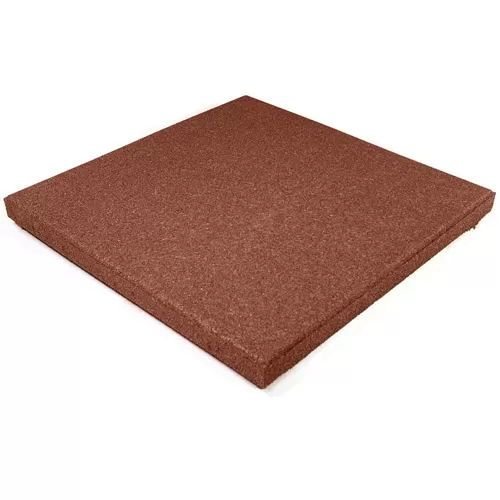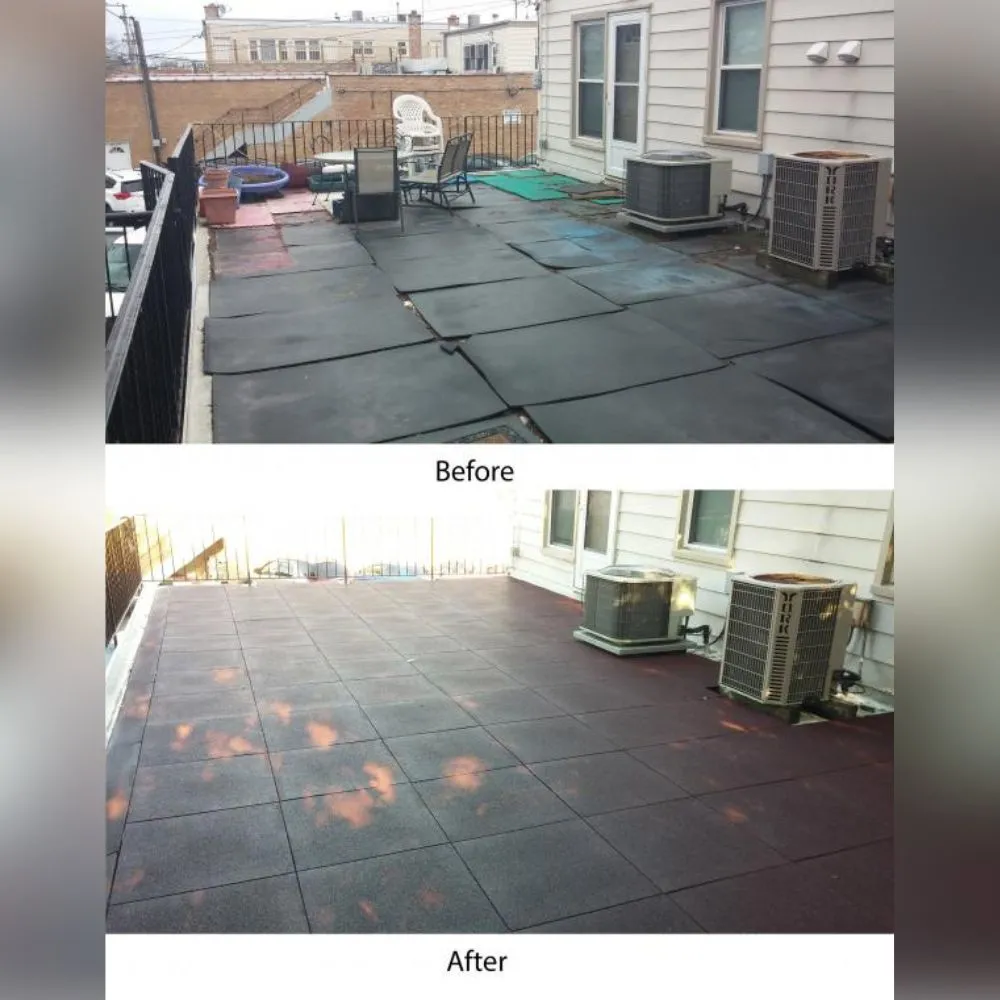Deck tiles work nicely to give a worn wood deck or concrete patio a new look. These tiles may consist of plastic, rubber, artificial grass, or foam composites, as long as they have weather-resistant and waterproof capabilities. Interlocking decking tiles are easy to install.
Article Library
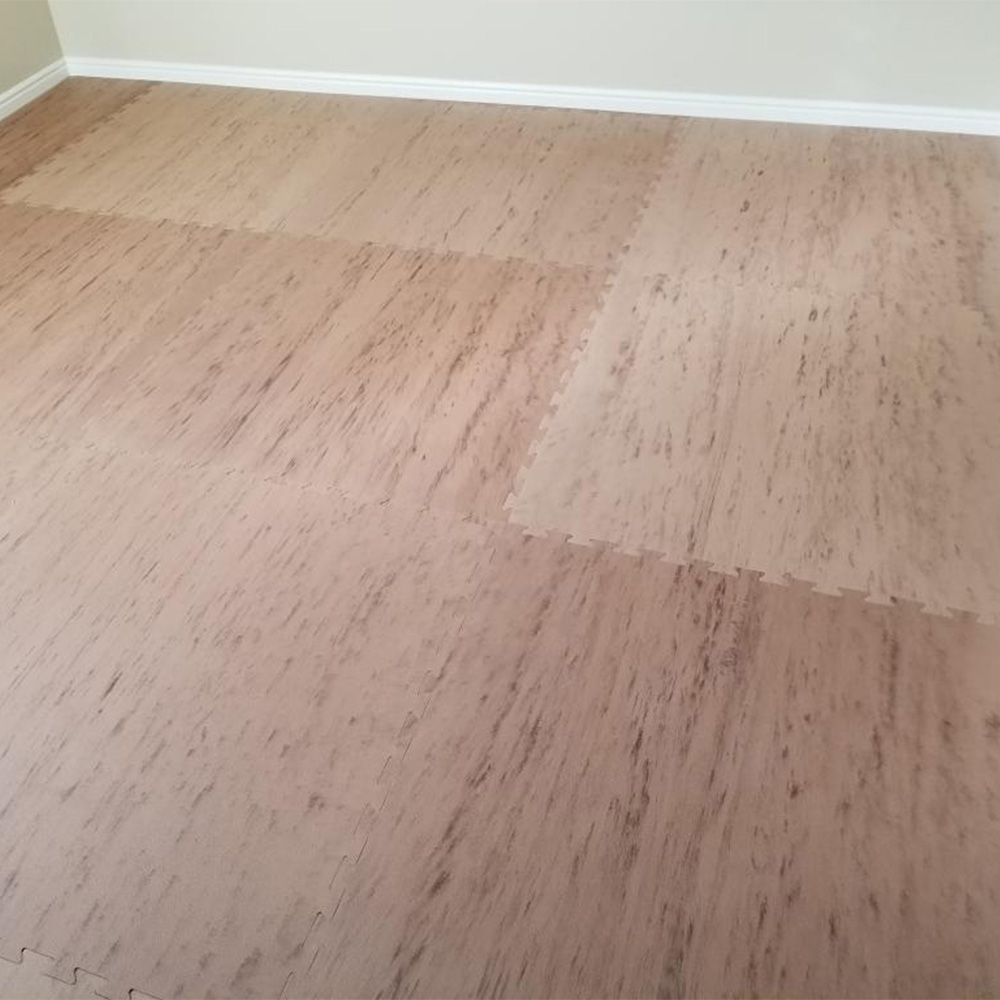


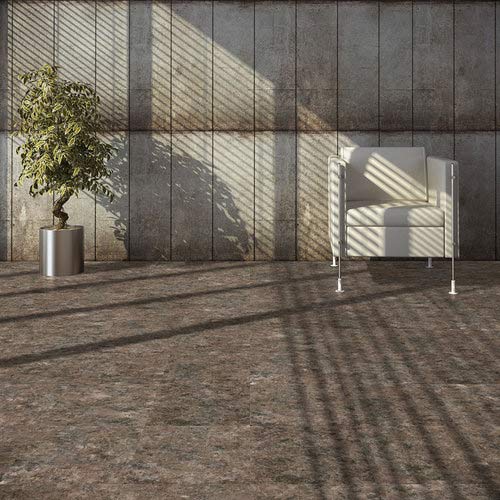



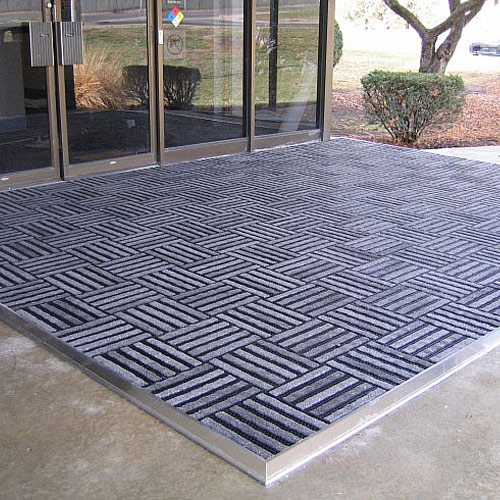




Video Library












Ideas Before You Buy Deck Tiles
Tips & considerations for purchasing decking tiles:
The following blogs offer tips on what aspects to look for in outdoor deck floor tiles before making a purchase. Wherever you plan to use this flooring, these are all important things to learn before making your final decision.- Find out about the best procedures and products for cleaning decking tiles. Learn More: How to Clean Deck Tiles of Different Material Types
- Find out what you should know about how to choose between deck tiles or concrete pavers. Learn More: What’s Better - Deck Tiles or Concrete Pavers?
- Learn about the testing Greatmats performed to determine how hot our outdoor flooring products got. We’ll tell you which one is the best choice if you are concerned about the flooring getting too hot. Learn More: What Decking Doesn't Get Hot?
Top 10 Questions About Decking Tiles
Below are the most popular questions we've received about outdoor flooring options for deck tiles. Click the question to get a detailed answer and explanation on these topics.- What Is the Best Way to Cover an Old Deck? When a concrete or wood deck is beginning to show its age, placing deck tiles over the top can provide a fresh look for the area. As long as the base material is safe to bear the weight of people walking on it, placing a new surface over the top is a quick and easy design solution.
- What Options Do You Have for Installing Outdoor Tiles Over a Wooden Deck? If you select interlocking deck tiles, you can install these tiles as a DIY project over the wood deck, as they rarely require gluing or sophisticated installation techniques. Make sure the deck is structurally sound and is relatively flat and level with no exposed nails or screws to provide the best surface for the installation process.
- What Can I Use to Cover a Gravel Floor? When looking to create a gathering area outdoors when you don’t have a traditional patio or deck, placing firm tiles over the top of a gravel area creates a usable space. Mats consisting of hard plastic, PVC plastic, and rubber are ideal for making this type of space safe and comfortable.
- How Do You Install Deck Tiles Over Gravel? Start by laying out a level and evenly spread gravel area using a smaller type of rock, such as river rock or pea gravel, to create a sturdy base. Then place interlocking tiles over the top of the gravel base, allowing you to remove the tiles later, if necessary.
- How Do You Cut Interlocking Deck Tiles? When the decking tiles consist of materials like PVC plastic, rubber, or polypropylene plastic, installers can use a straightedge and a utility knife to slice through the tile. It may take multiple cuts to move completely through a thicker material, or the installer could use a jigsaw.
- How Do You Build a Floating Deck Over Grass? Deck tiles are a smart choice for creating a temporary sitting area over the top of a natural grass lawn, as they provide stability and ease of installation. Select an area of the lawn that is relatively flat. Make use of interlocking tiles that don’t need glue, so you can disassemble the space later.
- What Are the Top Residential Rooftop Deck Flooring Options? In an urban area, sometimes the best way to create a gathering area is through adding a rooftop deck. Selecting deck tiles that consist of rubber, PVC plastic, artificial turf, or a rubber and foam combination provides water resistance and long-lasting performance in the harsh weather conditions the roof will have.
- What Is the Best Protective Material to Create a Deck Over a Rooftop Membrane? A rubber roof membrane works on a flat roof to move water to the gutters on the edges and to prevent water from leaking through. When creating a rooftop deck, it’s important to protect this membrane. Select deck tiles with flat bottoms and no protrusions that could tear the membrane.
- Can You Put Decking on a Flat Roof? As long as the roof membrane and structure supporting the flat roof are sturdy enough to allow people to walk on it, you can place deck tiles on the flat roof. Select among materials like rubber, plastic, artificial turf, and PVC to create the rooftop deck.
- What Are the Best Materials for a Boat Deck? With the constant dampness on a boat, having a type of flooring that can handle water and that maintains slip resistance is important. PVC interlocking tiles that have perforations to allow water to drain away are a great choice on a boat deck, as well as rubber or wet-area carpeting.
Best Deck Tile Products
Patio Outdoor Tile
In a patio or deck area that may have exposure to rain and other weather events, the Patio Outdoor Tiles from Greatmats contain perforations that allow water to drain through to the concrete or wood underneath. These 1-by-1-foot tiles contain hidden interlocking edges, simplifying installation. They are available in four different colors.
Sterling Roof Top Tile
At 2 inches in thickness, our Sterling Roof Top Tiles are extremely durable, giving them the ability to stand up to almost any use case and any kind of rough weather. Each 2x2-foot tile has hidden interlocking edges, resulting in a clean-looking final installation.
StayLock Perforated Tile
In a deck area where significant rain or splashed water out of a pool is present, count on our StayLock Perforated Tiles to remove standing water. Each tile has perforations that allow water to drain through to the deck or concrete underneath. Five different colors of these deck tiles are available.
Perforated Garage Tile
Our Perforated Garage Tiles offer an easy snap-together installation, allowing for a DIY project. These tiles can support the weight of a car while including perforations that ensure the water can drain through to the subfloor. Three different colors of tiles are available.
Max Playground Rubber Tile
When seeking to create a deck or patio area that can be made ADA compliant, the Max Playground Rubber Tiles from Greatmats include ADA border edge ramps that you can attach. These 2.5-inch-thick rubber tiles are extremely durable and appear in many different color options.
Decking Tiles Customer Installations
Jews for Jesus Organization
When seeking to replace a worn rooftop deck material at the Jews for Jesus Organization building, the installers needed to protect the rubber roofing membrane with durable tiles. The group did extensive research before deciding that our 2-inch-thick rubber tiles would deliver cost-effectiveness and the durability the group desired while protecting the membrane from punctures.
Rooftop Deck: Sterling Roof Top Tile
Customer Doug VanWormer
After spending years scraping and staining his deck, Doug VanWormer decided to investigate some less labor-intensive options. After comparing numerous product samples, he selected Greatmats’ perforated PVC plastic tiles to place over the top of the sound wooden structure, allowing for drainage and ventilation while protecting the wood underneath.
Over Wooden Deck: Patio Outdoor Tile
Deck Tiles Installation & Maintenance Videos
How hot do StayLock Perforated Tiles get in the sun?
Installing Patio Outdoor Tiles Over A Wood Deck
Deck and Patio Tile Considerations







